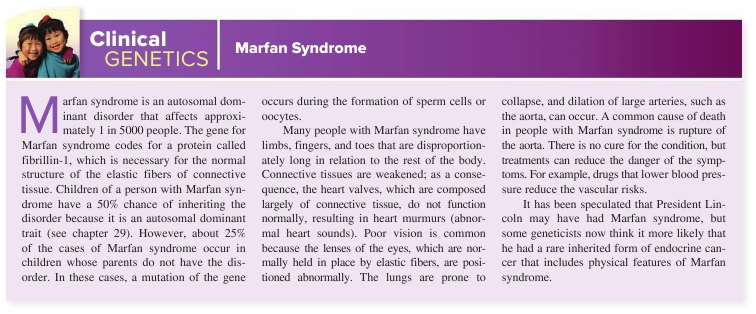CHAPTER 4 Tissues


127
contractile proteins, which are described in chapter 9. Musclescontract to move the entire body, to pump blood through the heartand blood vessels, and to decrease the size of hollow organs,such as the stomach and urinary bladder. The three types of mus-cle tissue—skeletal, cardiac, and smooth muscle—are groupedaccording to both structure and function (table 4.13).
Skeletal muscle
is what we normally think of as “muscle”(table 4.14
a
). It is the meat of animals and constitutes about 40%of a person’s body weight. As the name implies, skeletal muscleattaches to the skeleton and enables the body to move. Skeletalmuscle is under voluntary (conscious) control because a person can
purposefully cause skeletal muscle contraction to achieve specificbody movements. However, the nervous system can cause skeletalmuscles to contract without conscious involvement, as occurs dur-ing reflex movements and the maintenance of muscle tone. Skel-etal muscle cells are long, cylindrical cells, each containing manynuclei located at the periphery of the cell. Some skeletal musclecells extend the entire length of a muscle. Skeletal muscle cellsare
striated
(str ī ′ ā t-ed), or banded, because of the arrangement ofcontractile proteins within the cells (see chapter 9).
Cardiac muscle
is the muscle of the heart; it is respon-sible for pumping blood (table 4.14
b
). Cardiac muscle is under
TABLE
4.13
Comparison of Muscle Types